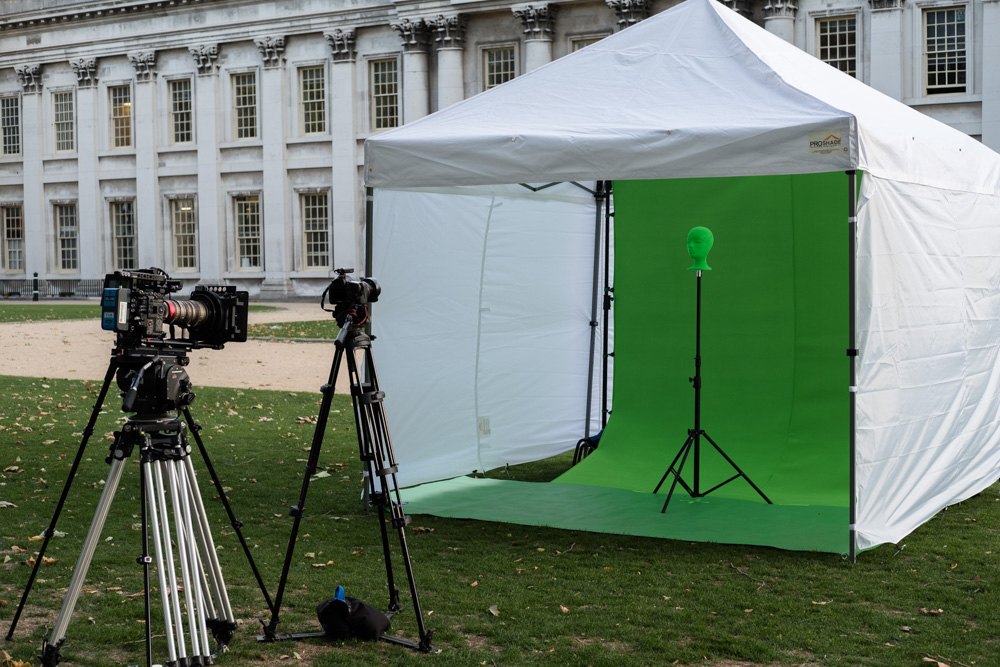
If you need crowds of people to fill a scene, one way to achieve this is to get hundreds of supporting actors in place. The cost of this can add up of course, particularly if they require complex costumes. We needed to create a crowd of approximately 6000 people for the hanging scene in Poldark – Series 5, with a limited budget and limited time. This is how we achieved it…
The Process


The scene is set in the courtyard of the Old Royal Naval College in Greenwich and shot from the gallows looking out to the crowd with the river behind. This also meant replacing the modern London skyline and boats with something more suitable for the period.
The budget wouldn’t allow for 6000 supporting actors (SA’s), so we needed another plan. There were two options that sprang to mind; multiple takes of a small group of SA’s layered up to multiply their numbers or a CG generated crowd. Actually, we used a combination of both techniques.
It was important the front few rows of SA’s reacted correctly to the dialogue of the scene. Their costumes would also be seen in detail, as well as their faces. Realistically, this meant that using a CG generated crowd for the first three or four rows was not preferable given our budget. We had around 80 SA’s to utilise for the shot so their positioning was carefully planned in previz making sure they would be seen at the front of the crowd.
On the shoot day, groups of SA’s were positioned along the front line of the crowd. We carefully marked where the outer line of people was too. The action was shot with them in place, then they moved as a group to start where the previous group ended, repeating the action again, and so on until the space required was covered. We set up a large greenscreen behind the SA too which helped separate them from the background so the join between them could be created. In reality, there was some rotor-scoping to be done too as some of the SA’s overlapped each other in the different plates.


We also captured the additional footage of both the SA’s and the Guards in our Ambient Light-tent setup. This gave as additional action to place in the scene where appropriate – where there was a gap between people, or to fill an area towards the side for the crowd for example. The lighting in the tent is fairly ‘flat’ meaning it can be matched at the compositing stage which is helpful. Each person took it in turn to perform actions which we filmed in 8K. We also photographed hi-res reference shots of hats, shoes, and faces. This was organised into neat picture packages for use later by the Comp and 3d teams.

Direction 
Waiting to get in 
Striking a pose 
Ready for hats and wigs
The main bulk of the crowd was generated in Houdini due to its suitability of working with large numbers of models and simulations. We used Motion Capture to give us realistic animation that was then applied to the Houdini characters. A number of different passes of animation were used to give a random feel of movement, plus some additional animation was mixed in too. The photographs and footage captured in the Ambient Capture Tent were used to achieve variation by changing skin tones and adding different hats to the models for example. We also mixed and matched costume amongst the models to avoid repetition. The quality of texturing was good enough for background characters.
The simulations were generated with cryptomattes too allowing the Comp team to adjust individual sections of the crowd, right down to their hats and faces for example.
We researched how crowds of this size behave in reality. To avoid a very regimented feel to the crowd, we added in some live-action elements around the sides and towards the back of the crowd. This helped the CG characters to integrate a little better and add randomness to the outer parts of the scene.
The background of the shot also needed changing. It was, of course, modern London so we created a DMP (Digital Matte Painting) using elements we’d gathered for previous shots, along with animating some boats of the river and little atmos in the air to tie it all together.
With careful planning and by combining our on-set and post-production skills, we can help you achieve incredible results for even the most complex shots.




